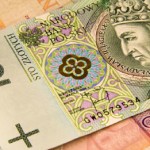Friday’s trade saw EUR/GBP within the range of 0.7428-0.7583. The daily low has also been the lowest level since February 2008. The pair closed at 0.7475, losing 1.15% on a daily basis.
“We’ve broken through some pretty important resistance and supports in euro-sterling,” said Peter Kinsella, a senior currency strategist at Commerzbank AG in London, cited by Bloomberg. “It seems that with the ECB’s actions, where they have more than delivered on their commitment to increase their balance sheet, it’s probably the case that this down move in euro-sterling will continue. You just don’t have any reason to buy the euro now from an investment point of view.”
At 7:52 GMT today EUR/GBP was up 0.51% for the day to trade at 0.7461. The pair touched a daily high at 0.7477.
Fundamentals
Euro zone
German Business Climate Index
Business climate in Germany probably continued to improve in January, with the respective gauge rising to 107.4 from 105.5 in December. If so, this would be the highest index reading since July 2014, when the indicator came in at 108.0.
The IFO Business Climate Index reflects entrepreneurs’ sentiment in regard to current business situation and their expectations for the next six months. The index is based on a survey, conducted by phone and encompassing 7 000 companies, that operate in sectors such as manufacturing, construction, wholesaling and retailing industry. The Business Climate Balance represents the difference between the percentage share of respondents that are optimistic and the share of respondents that are pessimistic. The balance can fluctuate between -100, which suggests all responding companies assess their situation as poor and expect business conditions to deteriorate, and +100, which suggests all responding companies assess their situation as good and expect an improvement in business conditions. In order to calculate the IFO Business Climate Index, the Balance is normalized to the average of a base year, which currently is 2005.
The IFO Business Climate Index is comprised by two equally-weighted sub-indexes – a gauge of expectations and a gauge of current assessment. The IFO expectations index probably rose to 102.5 in January from 101.1 in December. If so, this would be the highest level since July 2014, when it was reported at 103.4. The IFO current assessment index probably advanced to 110.7 in the current month from 110.0 in December and November. If so, this would be the highest index value since August 2014. In case any of the gauges registered a larger-than-projected increase, this might have a bullish effect on the common currency.
The CESifo Group is to release the official numbers at 9:00 GMT.
Greek Election results
The euro touched fresh lows against peers after Syriza leader and Greek Prime Minister-elect, Alexis Tsipras, said the era of conforming with international demands for budget reductions has ended. Yesterday Tsipras’s Coalition of the Radical Left achieved 36.4% of the vote, with 95% of the ballots counted. Syrizas victory will probably set the stage for confrontation with Greeces European partners. Antonis Samarass New Democracy party remained second with 27.8% of the vote.
“What we do think this outcome brings is once again volatility back to the fore,” Ben Pedley, head of investment strategy for Asia at HSBC Private Bank in Hong Kong said in an interview with Bloomberg, cited by the same media. “We’re looking at $1.09, which right now looks quite conservative” for the common currency.
United Kingdom
BBA home loans
The number of home loans in the United Kingdom, issued by the British Bankers’ Association (BBA), probably decreased to 36 600 in December from 36 700 in November. If so, this would be the lowest number since May 2013, when 36 100 loans were issued. The BBA features the major banks in the country, which account for almost 60% of overall mortgage lending. The number of mortgage loans is considered as a leading indicator in regard to UK housing market conditions. As growth in mortgage lending signifies a healthy housing sector, which also contributes to overall economic activity, in case the number of loans dropped more than projected, this would reduce demand for the sterling. The BBA is to publish the official figure at 9:30 GMT.
Pivot Points
According to Binary Tribune’s daily analysis, the central pivot point for the pair is at 0.7495. In case EUR/GBP manages to breach the first resistance level at 0.7563, it will probably continue up to test 0.7650. In case the second key resistance is broken, the pair will probably attempt to advance to 0.7718.
If EUR/GBP manages to breach the first key support at 0.7408, it will probably continue to slide and test 0.7340. With this second key support broken, the movement to the downside will probably continue to 0.7253.
The mid-Pivot levels for today are as follows: M1 – 0.7297, M2 – 0.7374, M3 – 0.7452, M4 – 0.7529, M5 – 0.7607, M6 – 0.7684.
In weekly terms, the central pivot point is at 0.7539. The three key resistance levels are as follows: R1 – 0.7650, R2 – 0.7825, R3 – 0.7936. The three key support levels are: S1 – 0.7364, S2 – 0.7253, S3 – 0.7078.





